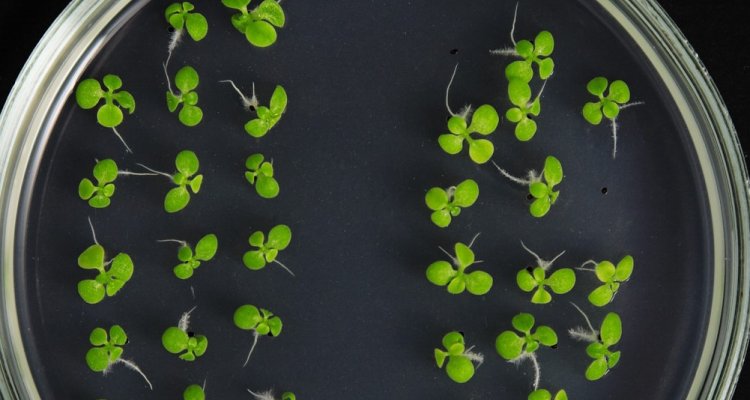
Project
How mechanical cues shape plant development
Cells can sense intrinsic mechanical perturbations as well as those coming from the environment, and are able to convert these into intracellular biochemical signals that induce changes in gene expression. By using Arabidopsis embryos as model system, we aim to elucidate how internal and external mechanical signals are coupled to the biochemical machinery of plant cells, leading to adaptive changes in cell mechanics, transcription and polarity.
Background
Classical approaches to study biological functions involve the description of chemical interactions between biomolecules. However, in the past decades it has become clear that mechanical signals couple to the biochemistry of the cell to promote substantial changes in gene expression.
Plant cells can perceive the physical forces from the environment through their cell walls and plasma membrane. These physical cues are internalized, inducing a cascade of chemical signals that allow cells to respond to mechanical perturbation. Different model systems such as pollen tubes, root hairs and hypocotyl cells provided important insights in plant mechanobiology. Although, there are many examples of plant responses to mechanical stress the molecular mechanisms underlying these processes are not fully understood.
In this project we propose to use Arabidopsis thaliana embryos since it is known that their well characterised developmental process is under mechanical control. Therefore this “miniature plant” provides a full three-dimensional context to study how plant cells and tissues respond and adapt to mechanical stimulation.
Aim of the project
The research on biological functions and cell development has been mainly focused on the chemical interactions between biomolecules. However, it has become clear that several biological processes cannot be explained only by the patterns of gene expression and biochemical reactions. Since biomolecules are sensitive to mechanical stress, many cellular processes are modulated by physical forces acting on specific molecules. This project is aimed to elucidate the mechanisms underlying plant cell perception and response to mechanical perturbations, which modulate plant development.
Approach
Arabidopsis thaliana embryos will be used as model systems, allowing the study of the plant mechanome in a 3D context. Given that during early embryogenesis directional growth and oriented cell division take place, as well as the establishment of different cell types, embryos are ideal to look into how mechanical signals are generated, sensed and transduced to shape biological systems.
The Plant Development lab has developed a set of genetic tools and imaging methods for visualising structures such as the cytoskeleton in the embryo, an imaging methodology to analyse cellular reorganisation during early embryogenesis and its genetic control. Each of the components in the mechanome can now be studied in detail in Arabidopsis embryos, including the visualization and modeling of cells and embryos, their cytoskeleton and polarity system, as well as gene expression profiles. The aim is to take advantage of this system and the ability to manipulate the embryo in microfluidic devices, to study the mechanical feedback and responses in the plant embryo.
The innovative aspects of this project rely on the study model proposed and the tools to analyse the mechanical feedback and responses in Arabidopsis early embryos. Such model system allows direct and indirect measures of mechanical stresses, cellular and tissue deformation and controlled manipulation of the mechanical context in 3D. The use of microdevices for mechanical stimulation will allow to asses properties of the genetic output system, and provide a massive resource for future investigation of the mechanoperception and mechanotransduction feedback systems.
Contact
Do you have a question about mechanical cues during plant development, or would you like to join us as a student researcher? Please contact us.